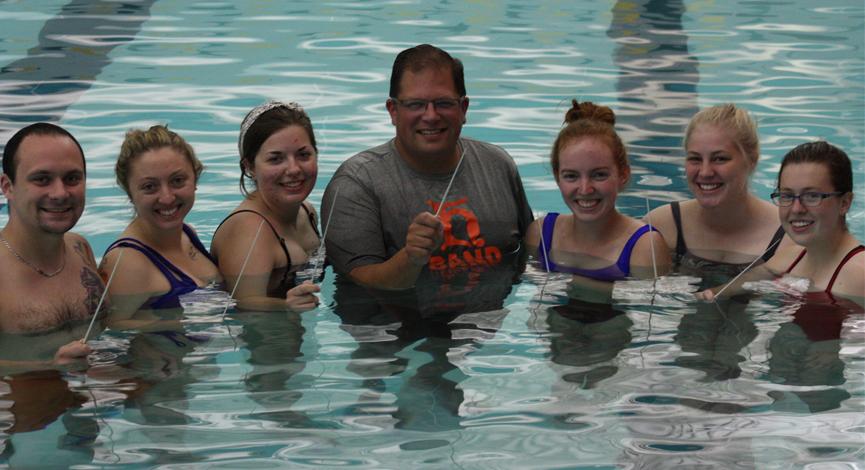
As the saying goes, resistance is futile. Or is it?
In the world of instrumental conducting, resistance is imperative in teaching would-be conductors the proper billowy physical motions of the baton. The feeling is similar to buoyancy or weightlessness.
It’s a difficult concept to demonstrate, so Professor Jon Waters took an unconventional approach. For two class sessions recently, the pool at the Tiffin Community YMCA became a classroom for Jon and his seven students, who learned that water naturalizes the motion of conducting.
“It’s very hard to teach the feeling of weightlessness in the atmosphere. You need that feeling of resistance, and it can’t be taught in a classroom,” Jon says. 
The water became an effective teaching tool to convey the idea. “Water helps to create resistance that air doesn’t. If you conduct in the water and then out of the water, you can transfer that feeling of resistance to your arms and shoulders,” he explains.
After an initial reaction of “We’re going to do what?” the students grabbed onto the idea when they got in the water with their professor. The pool sessions required them to step outside their comfort zone and see each other in a different light. “That’s a hard sell for some students. But by going to the pool, that breaks down those things and changes up the dynamic,” Jon says.
It definitely worked. The professor saw their confidence and maturity soar.
“I see totally different conductors in them from having been in the pool,” he says. “The experience just codified all of the mechanics of the things I’ve been trying to teach them in words.”
It turns out the pool may have some health benefits, too. Conductors are prone to shoulder, elbow and wrist injuries. Practicing in the water removes the tension from those joints and helps to prevent joint injuries, Jon explained.